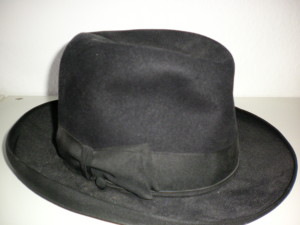“What’s in a Name?”
A pseudonym is much more than a writer taking a different name, or even a writer hiding behind a different name. It requires a process of creating a whole new writing style.
Like hitting a tennis ball, making a quilt or playing an instrument, writing is a skill.1 As a skill, it can be trained, honed and improved. Talent is useful, but most writers agree that talent only takes you so far, especially when it comes to writing fiction.2
There are many ways to work on the skill of writing and to hone the craft.3 A favorite is the “write as someone else” exercise. In fact, writing as someone else was such a boon, it allowed for the creation of me, Royce Leville.
Okay, before we give birth to a pseudonym,4 let’s take a few steps back. Why write as someone else? Good question. If you’re working towards writing fiction, especially novel-length, then you need to accept that there’s a lot of preparation and work involved before you even get to chapter one. Part of that is writing character descriptions.5 And the character really comes to life when he or she is given a voice; that is, when you attempt to write “in character.”6
Here’s a good sample exercise for writing as someone else:
- Step 1: Write down some details of a character, including age, gender, profession, nationality, brief back story
- Step 2: Move on to personal interests (past and present), taste in music, sports, books, etc
- Step 3: Give the character some applicable (or even contrary) attributes, based on what’s already been listed in steps 1 and 2
- Step 4: Start to populate the character’s world: car, house, furniture, clothing, accessories. Maybe make a list of the items found in the character’s fridge or wallet
- Step 5: Now comes the Frankenstein moment. Can you bring the character to life on the page? Write in the first person, trying to use this character’s voice. Start with very simple things, such as making a cup of coffee or getting ready for work. See if you can write “in character”
- Step 6: Now place the character in situations with other people. Think about dialogue and how this character speaks, and how this character behaves and reacts
Hopefully, through such a process, the character moves from being a blur of features to a sharply drawn and detailed person, one you might find yourself having conversations with inside your head.7
The more work you do in fleshing out the character, the more complex and believable the character becomes. In fact, the character may become so complete, he or she might even become the writer, with a unique style and a specific genre. And you’ve got yourself a pseudonym.8
Once there, the trick is how to get in character. Royce Leville has a black hat. With this hat on, Royce is writing.
This Jekyll and Hyde act might sound weird, but it can open some very interesting creative doors.
Notes:
- This is the best thing to understand about writing, as it will help you with all forms of writing, whether it’s a birthday card for grandma, an important report at work, or a speech of some kind. If you work at writing, you can get better at it.
- There are plenty of writers out there low on talent who churn out successful books.
- Solitary writing endeavors result in little progress. Attend workshops, take creative writing classes, join a writing group. Book clubs are also good. Take the time to master the tenses and understand things like point-of-view, narrator knowledge and character consistency.
- Royce has written before about the benefits of writing under a pseudonym: http://chapterbreak.net/2015/01/12/guest-post-seven-reasons-to-write-under-a-pseudonym-by-royce-leville/
- Who hasn’t read a book with characters that seemed more like lazy sketches on napkins rather than intricately detailed and artistically drawn portraits? Or where a character said something that the character was completely unlikely to say?
- Have no illusions. This is much more difficult than it sounds.
- Not necessarily a bad thing.
- And you’ve possibly opened up a little can of crazy, because you’ll be writing as a character you’ve created, who then starts writing as characters he or she creates. Neat, huh?
ABOUT THE BOOK OF NAMES:
There’s a benevolent locksmith with keys to every lock in town, a serial-killing vet who harvests his victims’ organs, a group of men locked inside a container and stranded at a harbor somewhere, and a performance artist who can open a bottle of champagne in an extraordinary way
Strange situations, unsolvable problems, secret lives, redemption and revenge. At times THE BOOK OF NAMES invokes the spirit of The Twilight Zone, yielding tales of morality, sexuality, and power.
ABOUT THE AUTHOR:
Campbell is a prolific author, journalist and advertising writer who has published three books under his own name and two as Royce Leville. He has won four independent publishing awards and received three prestigious writing residencies. Campbell, born in Australia and residing in Germany, took second place in the 2012 Next Generation Indie Book Awards for his first Leville book, A Little Leg Work. His articles have featured in numerous magazines and newspapers, while his short stories have appeared in Australian Reader, Spotlight Magazine, Italy from a Backpack and the Fellowship of Australian Writers (WA) compilation, Lines in the Sand.
Find more information at: www.rippplemedia.com
Thank you to Royce for this fascinating look at pseudonyms and building characterization within writing!



